There’s a good reason why the terms “midsize sedan” and “family sedan” are often used interchangeably. Not long ago, before crossovers and SUVs captured the attention of American car buyers, these sensibly sized four-door vehicles fulfilled the needs of most families.
They still do, but with compact and midsize SUVs now dominating the practical space, midsize sedans have begun to emphasize style and driving enjoyment to stand out.
The idea is simple: if practicality now belongs to SUVs, then it’s time to shift focus bring on the sedans featuring turbocharged engines (or increasingly, hybrid powertrains that don’t ask for compromise), sporty chassis tuning, and bold, attractive styling.
That doesn’t mean the affordable midsize four-doors featured on this list have abandoned practicality. Thanks to years of gradual size increases, many sedans in this class now offer extremely spacious interiors, along with generous trunk space.
Mid-Range Sedans That Impress
Most still come standard with front-wheel drive, but all-wheel drive is commonly offered as an option, giving SUV shoppers even more reason to consider them.
Several models also boast impressive fuel efficiency, with some offering hybrid systems either as an option or as standard equipment.
2025 Subaru Legacy
Subaru’s brand image is wrapped up in all-weather-friendliness and dogs. We can’t really speak to the dog part (smart marketing?), but the first point has everything to do with Subaru including all-wheel drive as standard on every vehicle it sells, save for its rear-drive BRZ sports car.
The Legacy also fosters warm and fuzzy feelings with its focus on safety. Underneath those attributes, however, the Subaru is inoffensive and generally lacks sportiness; even the available turbo engine fails to light much of a fire beneath this homely sedan.
Even so, the Legacy is very competent overall and earns its high ranking with its roominess, comfortable ride, safety features, and, yes, that standard AWD.
If this interests you, act fast the Legacy sedan will be discontinued after this year, as Subaru goes all-in on its Outback wagon sibling and the rest of its SUV-focused lineup.
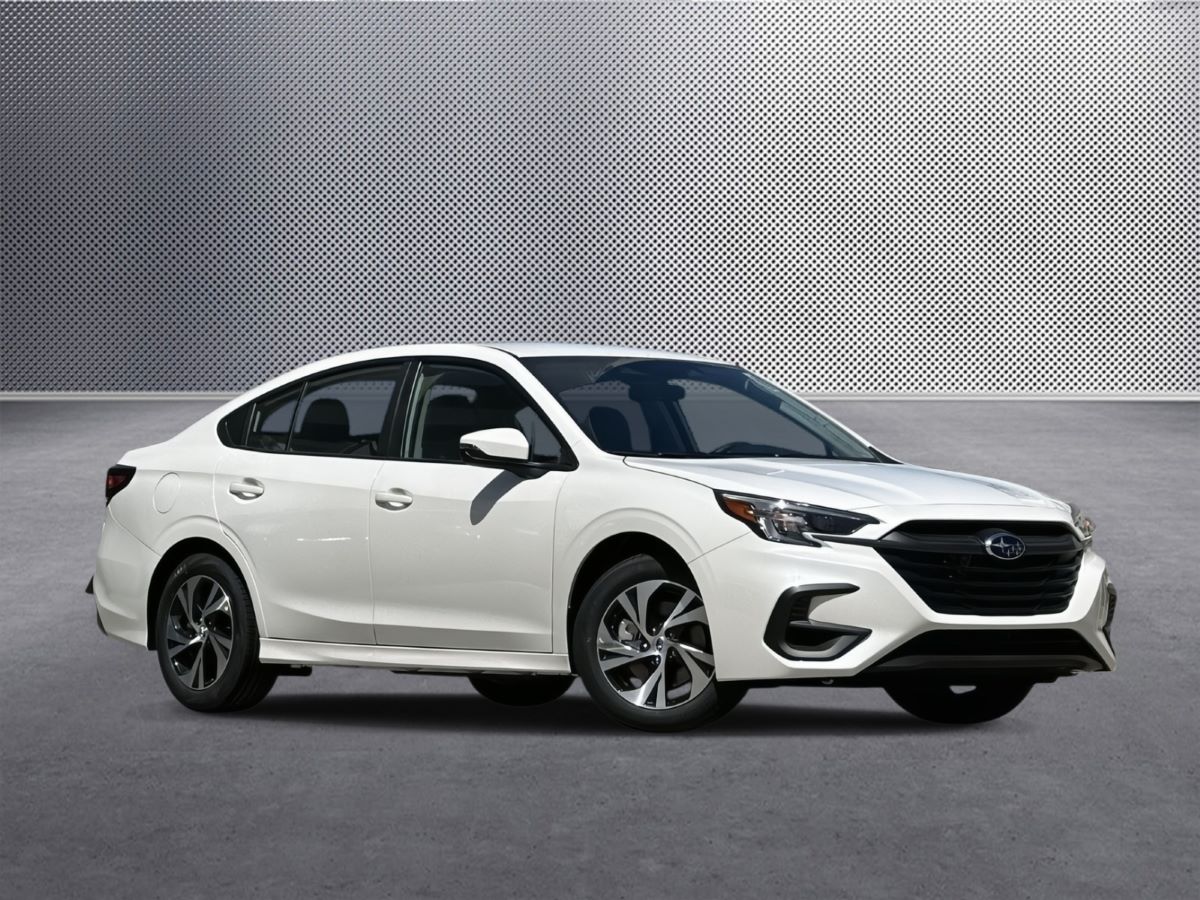
The 2025 Subaru Legacy comes with several notable pros: a comfortable ride, standard all-wheel drive, and a long list of standard safety gear.
However, it also has a few drawbacks, including somewhat odd looks, uninspiring driving dynamics, and an underwhelming large touchscreen interface.
Priced starting at $26,380, the Legacy offers two engine options: a 2.5-liter flat-4 producing 182 horsepower and 176 lb-ft of torque, and a 2.4-liter turbocharged flat-4 delivering 260 horsepower and 277 lb-ft of torque.
Fuel economy ranges from 23–27 mpg in the city, 31–35 mpg on the highway, and 26–30 mpg combined, depending on the engine. Trunk space is a respectable 15 cubic feet.
2025 Kia K5
The sedan formerly known as Optima receives several updates for 2025, most notably the replacement of its standard engine and the introduction of Kia’s latest dashboard screens.
The previous standard turbocharged engine a small 1.6-liter unit mated to a somewhat jerky dual-clutch automatic transmission has been dropped.
In its place is a slightly more powerful naturally aspirated 2.5-liter four-cylinder engine paired with a traditional eight-speed automatic transmission. Meanwhile, the sportier K5 GT retains its 290-hp turbocharged 2.5-liter four-cylinder engine.
Across the lineup, the K5 features a refined and professional-looking interior, and even the base model is well equipped with automatic climate control, LED headlights, automated emergency braking, lane-keeping assist, and automatic high-beam control.
While the K5 impresses with its features and stylish design both inside and out, it doesn’t quite deliver the sporty driving experience its appearance suggests.
The 2025 Kia K5 has several strong points, including an improved standard powertrain, available all-wheel drive, and excellent onboard technology.
However, it also has a few drawbacks: it isn’t as sporty to drive as it looks, it lacks a hybrid option, and competitors like the Honda Accord offer a more engaging driving experience.
The K5 starts at a base price of $28,365 and is available with two engines a 2.5-liter inline-four producing 191 horsepower and 181 lb-ft of torque, and a 2.5-liter turbocharged inline-four making 290 horsepower and 311 lb-ft of torque.
Fuel economy falls between 23–26 mpg in the city, 33–37 mpg on the highway, and 27–30 mpg combined, depending on the configuration. Trunk space is generous at 16 cubic feet.
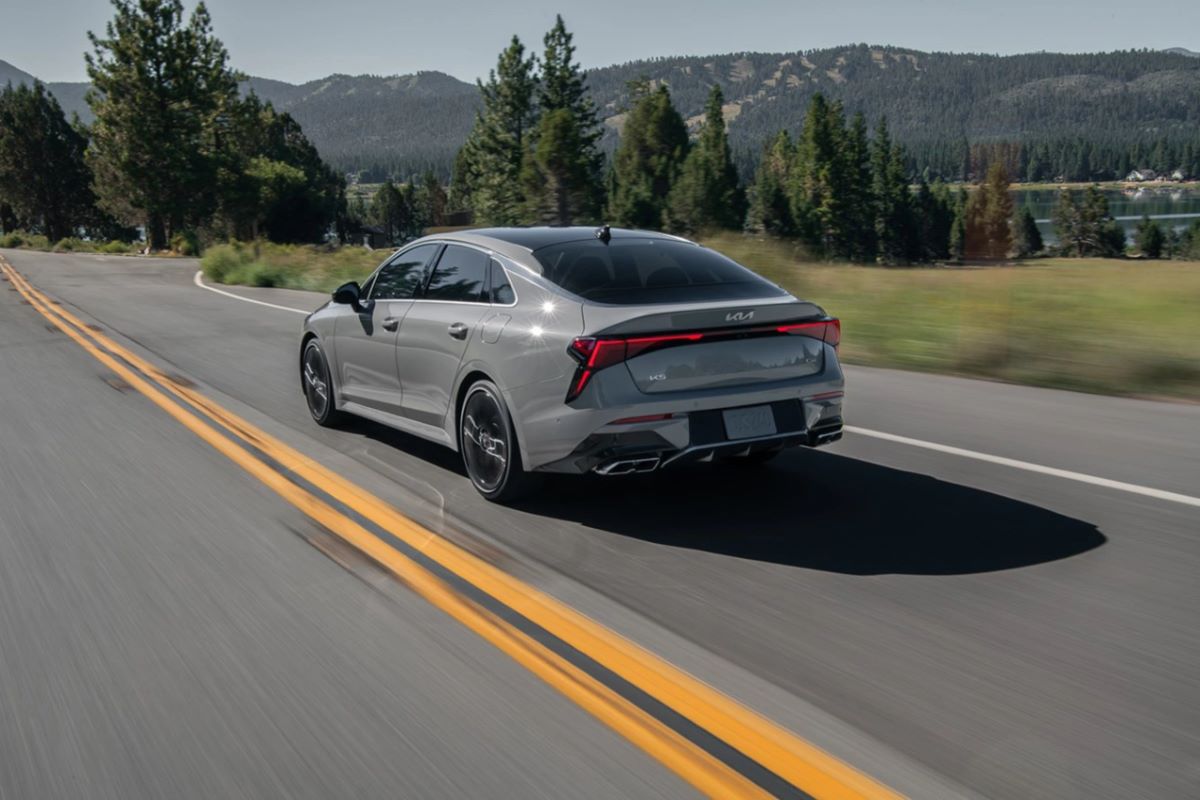
When Kia launched the K5 for the 2021 model year, it wasn’t just a replacement for the outgoing Optima—it set a new benchmark, quickly earning the title of our top-rated midsize sedan.
Now, four years later, the updated 2025 Kia K5 continues to build on that strong foundation. For this model year, the K5 receives refreshed front and rear styling, a reworked interior, and a new standard engine. The previous base turbocharged engine has been replaced with a naturally aspirated four-cylinder.
While this new engine generates slightly more horsepower, it produces less torque. EPA fuel economy estimates remain largely unchanged. In day-to-day driving, you’re unlikely to feel much difference in performance. What you will notice, however, is the significantly updated interior of the 2025 K5.
Cost-to-drive estimates for the 2025 Kia K5 LXS 4dr Sedan (2.5L 4cyl 8A) suggest about $126 per month in fuel expenses based on 15,000 miles of annual driving (a blend of 55% city and 45% highway), assuming regular unleaded at $3.13 per gallon in North Dakota. That compares favorably with the midsize car average of $160 per month.
The 2025 K5’s exterior tweaks are minimal—subtle enough to miss at a glance—but the interior updates are far more noticeable. A new touchscreen integrates smoothly into the instrument panel, while the redesigned climate controls add a contemporary touch.
Even the dashboard cupholders have been reimagined. Kia has also boosted the tech package: wireless Apple CarPlay and Android Auto are now standard, and several previously optional features have been rolled into the base equipment list. While these aren’t revolutionary changes, they make the K5 feel noticeably more modern and refined.
When comparing the K5 to its competition, two major players stand out: the Honda Accord and Toyota Camry. Both dominate in terms of sales and customer trust. While neither offers the kind of horsepower found in the K5 GT, they deliver superior fuel economy thanks to their available hybrid powertrains.
Another key rival is the Hyundai Sonata, which shares a mechanical platform with the K5 and offers many of the same features. The most significant differences between the two lie in their exterior designs and the Sonata’s available hybrid model.
2025 Hyundai Sonata
Closely related to the Kia K5, the Hyundai Sonata offers a softer, more comfort-oriented take on that sedan’s sporty character, placing a stronger emphasis on refinement and technology.
Last year, Hyundai leaned heavily into futuristic styling by introducing a distinctive “unibrow” LED front lighting signature, revising the rest of the exterior, and integrating its latest dual digital displays into the dashboard.
As a midsize sedan that boldly embraces eye-catching design, we believe the Sonata stands out as a clear success we find it hard to look away.
Beyond its dramatic looks, the Sonata brings substance, too, thanks to Hyundai’s generous warranty coverage and standard active safety features, making it a genuinely compelling value.
The only drawbacks come in the form of an engine lineup that feels underwhelming unless you’re looking at the performance-focused N Line model with its 2.5-liter turbocharged four-cylinder and rear seats that are a bit snug compared to competitors in the segment.
Still, for those who see sedans as a statement that crossovers and SUVs are too conventional, the Sonata delivers that message boldly.
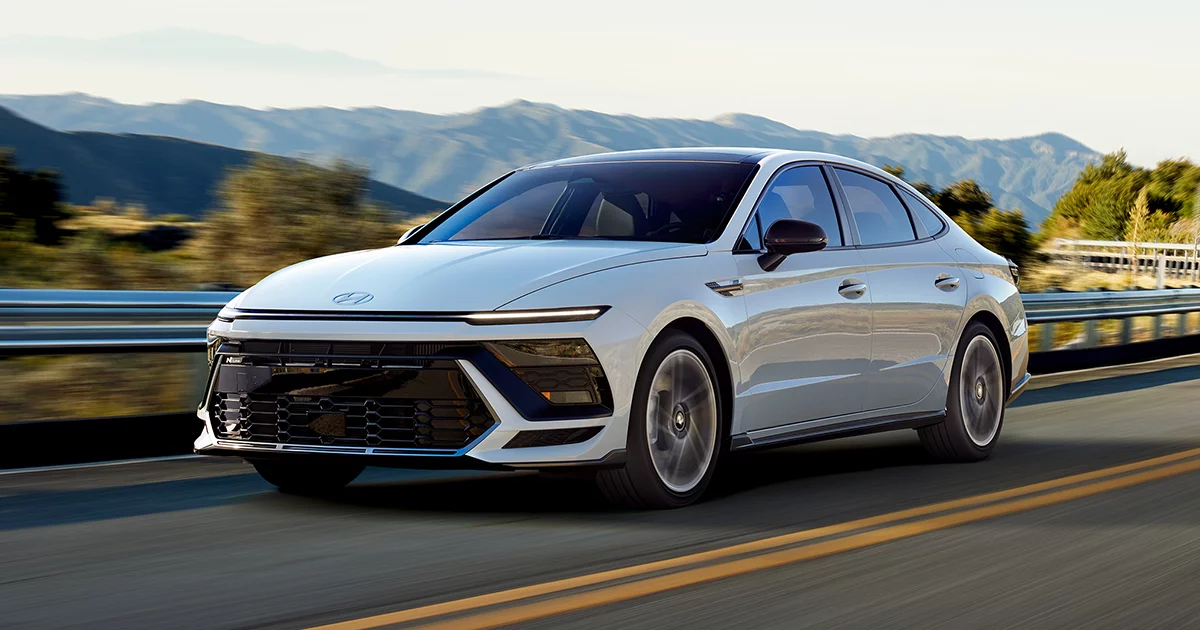
Our top pick is the available hybrid model, which combines a refined driving experience with exceptional fuel economy, sitting at the high end of the figures listed below.
The 2025 Hyundai Sonata comes with several notable advantages, including a fun yet comfortable N Line variant, large and visually impressive standard digital displays, and the option of all-wheel drive.
On the downside, the model now offers fewer configurations than it did previously, the platform is starting to show its age, and there are some quality compromises in the lower trim levels.
With a base price of $28,095, the Sonata is offered with three engine choices: a 2.5-liter inline-four producing 191 horsepower and 181 lb-ft of torque, a 2.0-liter hybrid inline-four with a combined output of 192 horsepower, and a 2.5-liter turbocharged inline-four making 290 horsepower and 311 lb-ft of torque.
Fuel economy ranges from 23–44 mpg in the city, 32–51 mpg on the highway, and 27–47 mpg combined, depending on the version. The trunk provides a generous 16 cubic feet of cargo space.
2025 Honda Accord
It is one of the best vehicles available, regardless of size or price class. Every model of the Accord delivers satisfying driving dynamics, sleek yet subtle styling, and excellent engines and powertrains.
Honda has long dominated the midsize sedan market, with the Accord offering quality interiors and mechanical reliability for decades.
The current Accord is no different, with entry-level models featuring a turbocharged gasoline engine that is both fuel-efficient and adequately peppy.
The rest of the lineup uses Honda’s innovative two-motor hybrid system paired with a non-turbocharged four-cylinder engine. In practice, the larger of the two electric motors handles most of the driving, while the engine primarily acts as a generator in the background.
At full throttle or on highways, however, the engine is engaged to help drive the front wheels, enhancing overall efficiency.
As a result, the Accord performs much like an electric vehicle, providing smooth, all-electric takeoffs and responsive acceleration around town.
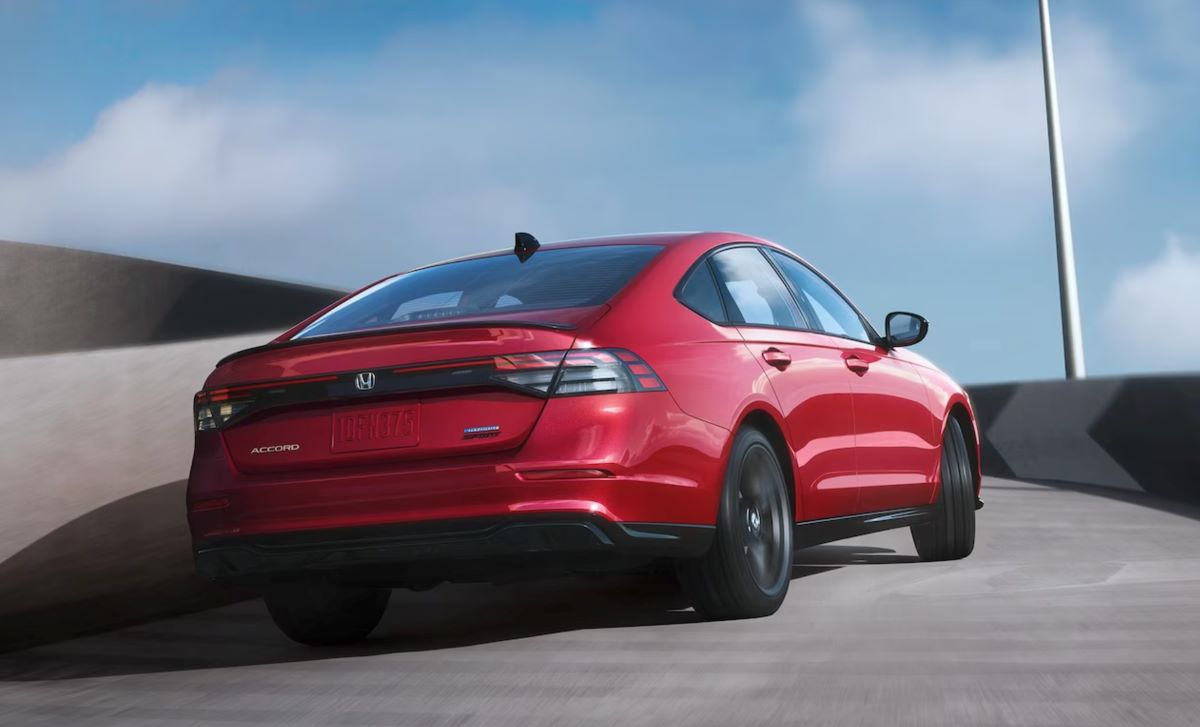
It excels in every area a sedan should, offering great value and doing everything exceptionally well. It’s so good that the fact some must-have features are only available on higher-priced trims can be overlooked.
The 2025 Honda Accord continues to uphold the nameplate’s reputation as a well-rounded and reliable midsize sedan. Over the years, the Accord has consistently stood out for its strong fuel economy, roomy and comfortable cabin, and ease of drivability.
Honda’s legacy for dependability only adds to its appeal. While the newly redesigned Toyota Camry now holds the top spot in Edmunds’ midsize sedan rankings, the Accord remains a serious contender in the segment.
For 2025, the Accord lineup sees a few updates. The LX trim has been replaced with a new SE variant, and rear air vents along with USB-C ports are now standard features across all trims.
These updates build on the 11th-generation redesign that debuted in 2023. As part of that redesign, Honda introduced a hybrid powertrain as standard on upper trim levels—a move that turns out to be a major advantage.
The hybrid system produces a total of 204 horsepower and achieves an impressive 44 mpg combined, with the EX-L Hybrid reaching up to 48 mpg. The Accord also provides a spacious interior, supportive seats, and a refined suite of driver assistance technologies, making it an excellent choice for families and daily commuters alike.
Cost-to-drive estimates for the 2025 Honda Accord LX (1.5L 4-cylinder turbocharged engine paired with a CVT) are based on 15,000 miles per year, split between 55% city and 45% highway driving, using a fuel price of $3.13 per gallon for regular unleaded in North Dakota.
Monthly fuel cost estimates come out to $120 for the Accord LX, compared to $160 for the average midsize car, highlighting the Accord’s efficiency.
In terms of drawbacks, some desirable features remain limited to the higher trim levels. Additionally, the Accord doesn’t offer all-wheel drive or a sport-oriented engine option, and its styling may still come across as somewhat anonymous to some buyers. Nonetheless, it’s a fundamentally solid family sedan that delivers where it counts.
While the Accord is a smart and safe choice, there are other compelling midsize sedans worth considering. The Hyundai Sonata, Kia K5, and Toyota Camry are all strong alternatives, each with their own advantages.
Shoppers should also take a look at the Honda Civic, which for 2025 offers the same hybrid powertrain as the Accord and nearly matches its interior space. Ultimately, the Accord remains one of the most well-balanced sedans in the class, and our test team’s Expert Rating can help you determine if it’s the right fit for your needs.
2025 Toyota Camry
It challenges the perception of the Camry as a dull, practical sedan. The latest Camry redefines its image by toning down some of its previous bold styling while introducing new features and performance updates.
It’s now hybrid-only, with a two-motor hybrid system powering the front wheels across all versions. All-wheel-drive models add a third electric motor to independently power the rear wheels, providing slightly more power and quicker acceleration without compromising fuel economy.
The entry-level Camry delivers an impressive 51 mpg combined. As with previous models, the SE and XSE trims offer sportier suspension and bolder styling, while the LE and XLE trims focus on comfort but still offer a refined ride.
The 2025 Camry now offers more standard features and a more engaging driving experience than before, making it a top contender in the midsize sedan rankings. It also reflects Toyota’s effort to move beyond the old “beige” image of its sedans, proving the Camry is anything but ordinary.
Both cars have their own strengths: the Accord offers a smooth hybrid experience with a classy interior, while the Camry is an efficient, powerful hybrid with a bold new design.
Whether you prioritize driving enjoyment, fuel efficiency, or interior space, both models provide excellent value in their respective categories.
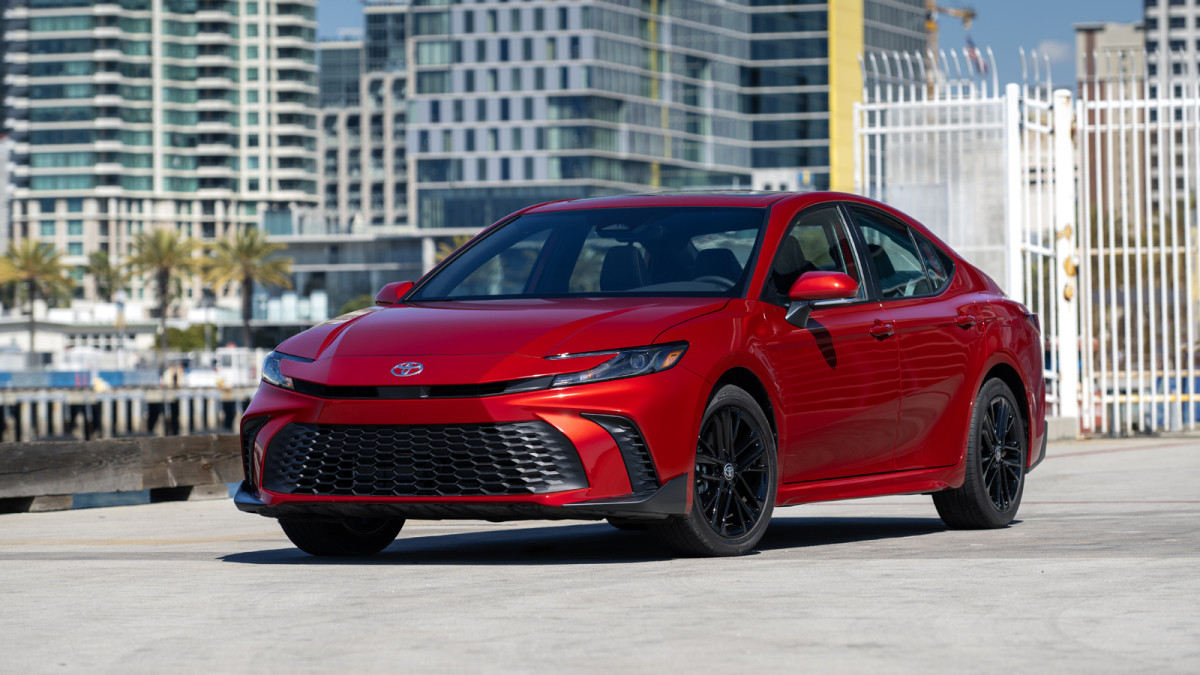
The starting price of the 2025 Toyota Camry is slightly higher than before due to its new hybrid-only lineup. However, the base LE model is more affordable than the previous-generation hybrid.
Among the four models Toyota is offering at launch, the LE boasts the highest fuel-economy estimates, thanks to its smaller wheels. Despite this, we would recommend the SE for its sportier feel.
The SE features a firmer suspension and more standard equipment, and it offers many of the most sought-after upgrades—such as a larger infotainment screen and the more powerful all-wheel-drive powertrain—as optional extras.
The 2025 Camry Hybrid offers two hybrid powertrains: one that powers the front wheels and another that drives all four wheels. The front-wheel-drive models come with a 2.5-liter four-cylinder engine paired with two electric motors, producing a combined 225 horsepower.
The all-wheel-drive models feature a third motor that drives the rear axle, boosting the combined output to 232 horsepower.
Both powertrains are paired with a continuously variable automatic transmission. These setups are similar to those found in the Toyota Prius, with the primary difference being the use of a 2.5-liter gas engine in place of the Prius’ 2.0-liter four-cylinder.
During our initial test drive, we found the hybrid powertrain to be responsive around town, thanks to the strong performance from the electric motors. However, no version of the 2025 Camry will be as quick as the previous V-6 model, which is something we’ll miss.
Both the SE and XSE models come with sportier suspension tuning, and we noticed tighter body control when cornering in the XSE during our test drive. However, we weren’t impressed with the steering, which lacked the necessary feel.
Also Read: 10 SUVs That Are Overbuilt in the Best Way Possible With Power, Luxury, and Road Dominance
Worst Value Popular Sedans
See which sedans miss the mark on performance or quality. These are the least popular models, often plagued by issues such as poor reliability or outdated features.
Chevrolet Bolt EV
The Chevrolet Bolt EV is a fully electric vehicle that offers an impressive driving range of up to 259 miles. Designed to seat five passengers, it provides a roomy interior that includes a 10.2-inch touchscreen for infotainment and control.
In addition to its practicality, the Bolt EV comes equipped with essential safety technologies such as forward-collision warning and automatic emergency braking. For buyers seeking a functional and efficient electric vehicle, the Bolt is an excellent option.
Since its debut in 2016, Chevy has steadily refined the Bolt into a compelling small electric hatchback that stands out with its unconventional styling and delivers strong value for money.
The Bolt EV—distinct from the slightly larger Bolt EUV mini-SUV, which is reviewed separately—holds the title of the most affordable EV sold in the U.S. for 2023. This makes it an appealing, budget-friendly alternative to other compact electric vehicles like the Tesla Model 3 and Hyundai Kona Electric.
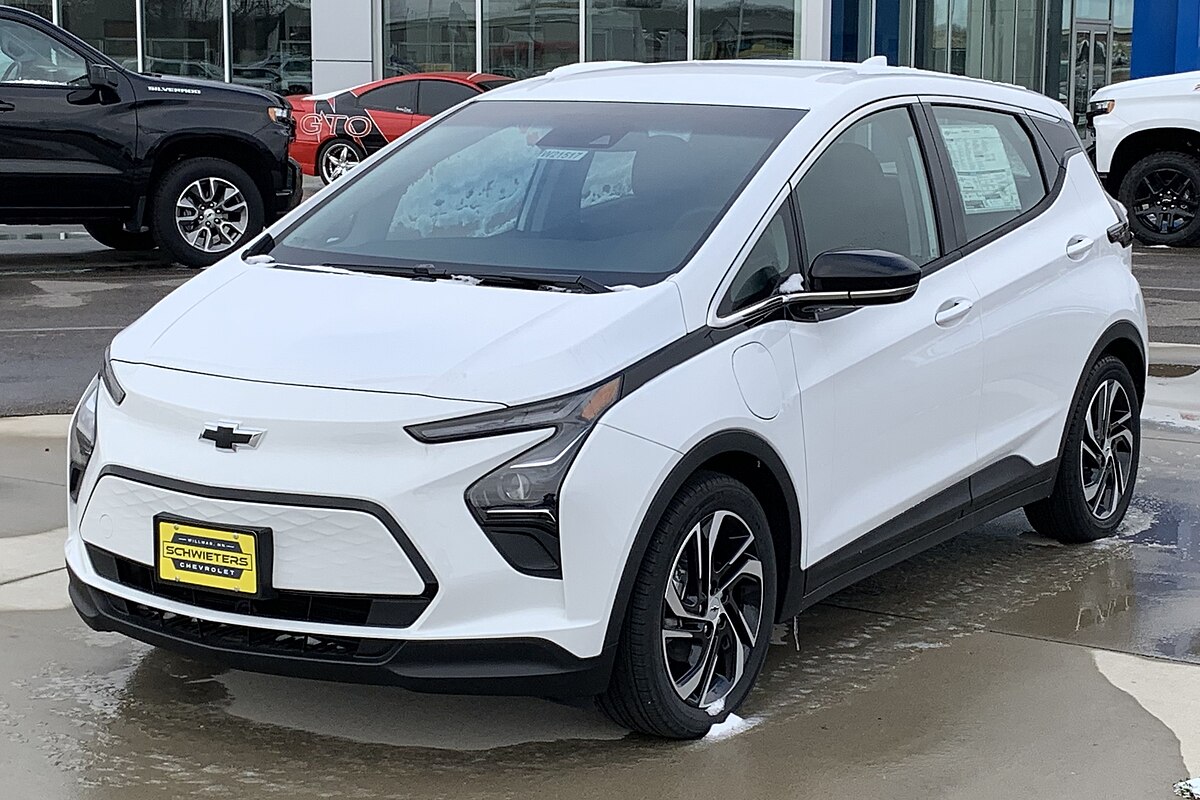
It features a single 200-horsepower motor that drives the front wheels and delivers an EPA-estimated 259 miles of range per charge. Equipped with DC fast-charging capability, the Bolt can recover up to 100 miles of range in just 30 minutes, according to Chevrolet.
Inside, the cabin offers more space than one might expect, with a layout that will feel familiar to longtime Chevy drivers. With the rear seatback folded down, the Bolt offers nearly as much cargo capacity as a Chevy Equinox.
For 2023, the most significant update to the Bolt EV is a substantial $5900 price cut compared to the 2022 model, which amounts to a total price reduction of $10,900 from the 2021 version—without any major changes to the car itself.
This dramatic price adjustment is Chevrolet’s response to the loss of the $7500 federal tax credit, which the company no longer qualifies for after surpassing the cap on EV sales.
It’s also a strategic move to rehabilitate the Bolt’s image following a damaging recall in late 2020, when Chevy had to address a battery defect affecting every Bolt produced to that point due to fire risk.
Production of both the Bolt EV and EUV was halted in November 2021 and didn’t resume until April 2022, once the issue was resolved. Looking ahead, 2023 marks the final model year for the Bolt EV and its crossover variant.
However, General Motors CEO Mary Barra has confirmed that a larger Bolt, built on GM’s advanced Ultium battery platform, is set to launch in 2025. Until then, 2024 serves as a transitional period before the next generation of Bolt arrives.
Nissan Maxima
The Nissan Maxima is a large, full-size sedan that combines a powerful V6 engine with sporty performance, upscale features, and modern technology.
Its stylish exterior design and well-appointed, comfortable interior set it apart for drivers seeking a blend of performance and luxury in a spacious sedan.
The Nissan Maxima has long held the title of the original “four-door sports car”—a label Nissan proudly applied to its largest sedan for decades.
While the current-generation Maxima is reaching the end of its production this year, the nameplate itself is not being retired. Instead, it’s set to return as an electric sedan, expected to draw significant design inspiration from the striking IMs concept that was first shown in 2019.
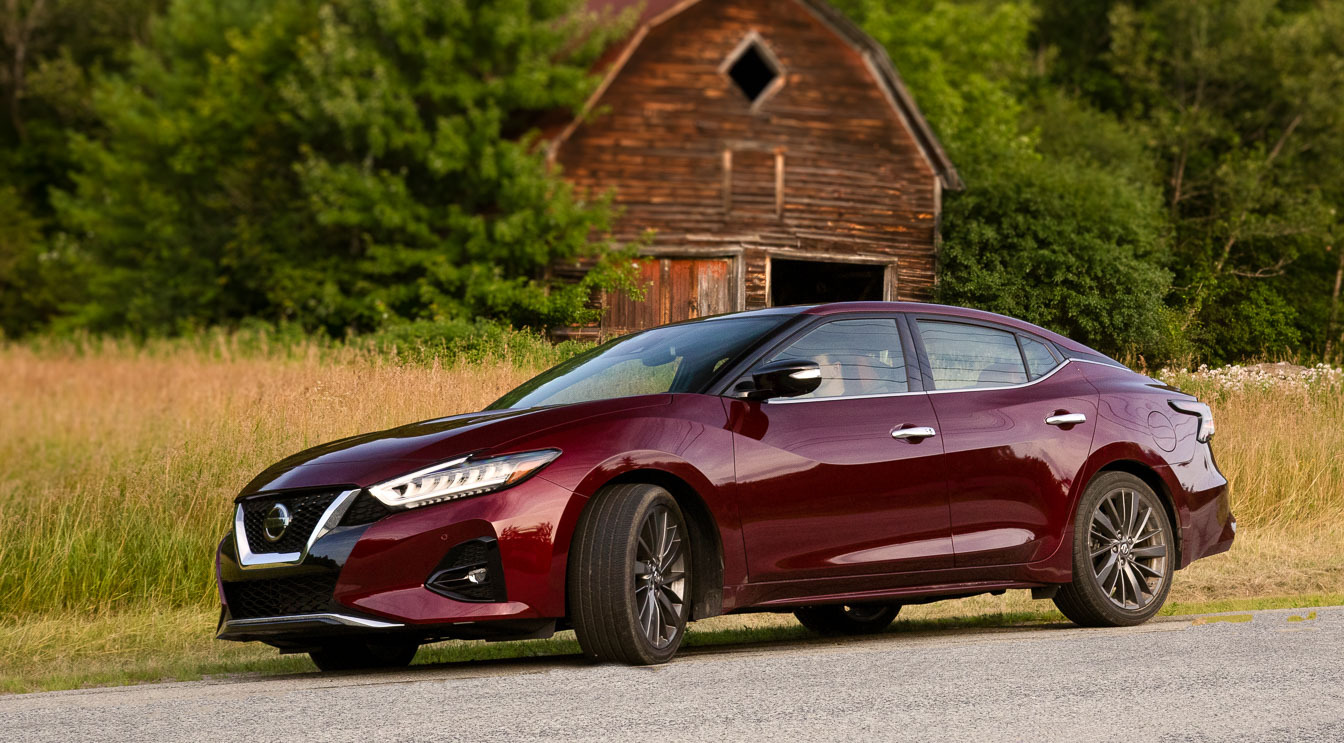
The upcoming 2026 Maxima is also anticipated to share powertrain components with the electric Ariya SUV and will likely be built starting in 2025 at Nissan’s Canton, Mississippi facility.
For the 2026 model year, the Maxima will be completely redesigned, replacing the outgoing generation. As the current version concludes production, the Maxima name will briefly disappear during Nissan’s lineup transition.
Almost nothing from the current model is expected to carry over except for the number of doors. Its exterior will borrow heavily from the IMs concept, characterized by sharp edges and slim lighting elements, which Nissan described as part of an “elevated sports sedan” aesthetic.
Pricing for the new Maxima is projected to begin around $44,000 and rise to approximately $61,000, depending on trim levels and optional features. The estimated trim breakdown is as follows: Engage at $44,000, Venture+ at $49,000, Evolve+ at $51,000, Empower+ at $55,000, and Platinum+ topping out at $61,000.
While Nissan hasn’t confirmed exact details for the 2026 Maxima lineup, it’s likely the trim structure will resemble that of the Ariya SUV, moving away from traditional naming conventions like SR and SV in favor of more contemporary names such as Engage and Evolve.
The entry-level models are expected to feature smaller battery packs to maintain a lower starting price, while higher trims will likely offer increased power and range, identified by a “+” in their names.
Also Read: 10 Best Cars for Families and 5 You Might Regret
Hyundai Sonata
The Hyundai Sonata is a midsize sedan that features a sleek exterior and a comfortable, well-designed interior. It delivers fuel efficiency through a range of engine options, including a hybrid, and is equipped with modern technology and advanced safety systems.
Whether for daily commuting or long-distance travel, the Sonata is a dependable and practical choice.
The 2025 Hyundai Sonata continues to stand out as a compelling choice in the midsize sedan category. Available as either a traditional gas-powered model or a hybrid, the Sonata also offers the flexibility of front-wheel or all-wheel drive.
It underwent a significant design refresh last year, giving it a bolder and more eye-catching look—something sedans need in order to stay relevant in a market heavily skewed toward SUVs. Because of this extensive 2024 update, the 2025 model carries over largely unchanged.
Fuel cost estimates based on driving 15,000 miles per year—split between 55% city and 45% highway driving—suggest the 2025 Hyundai Sonata SE 4-door sedan (2.5L 4-cylinder with 8-speed automatic) would cost about $120 per month to fuel in North Dakota, assuming regular unleaded at $3.13 per gallon.
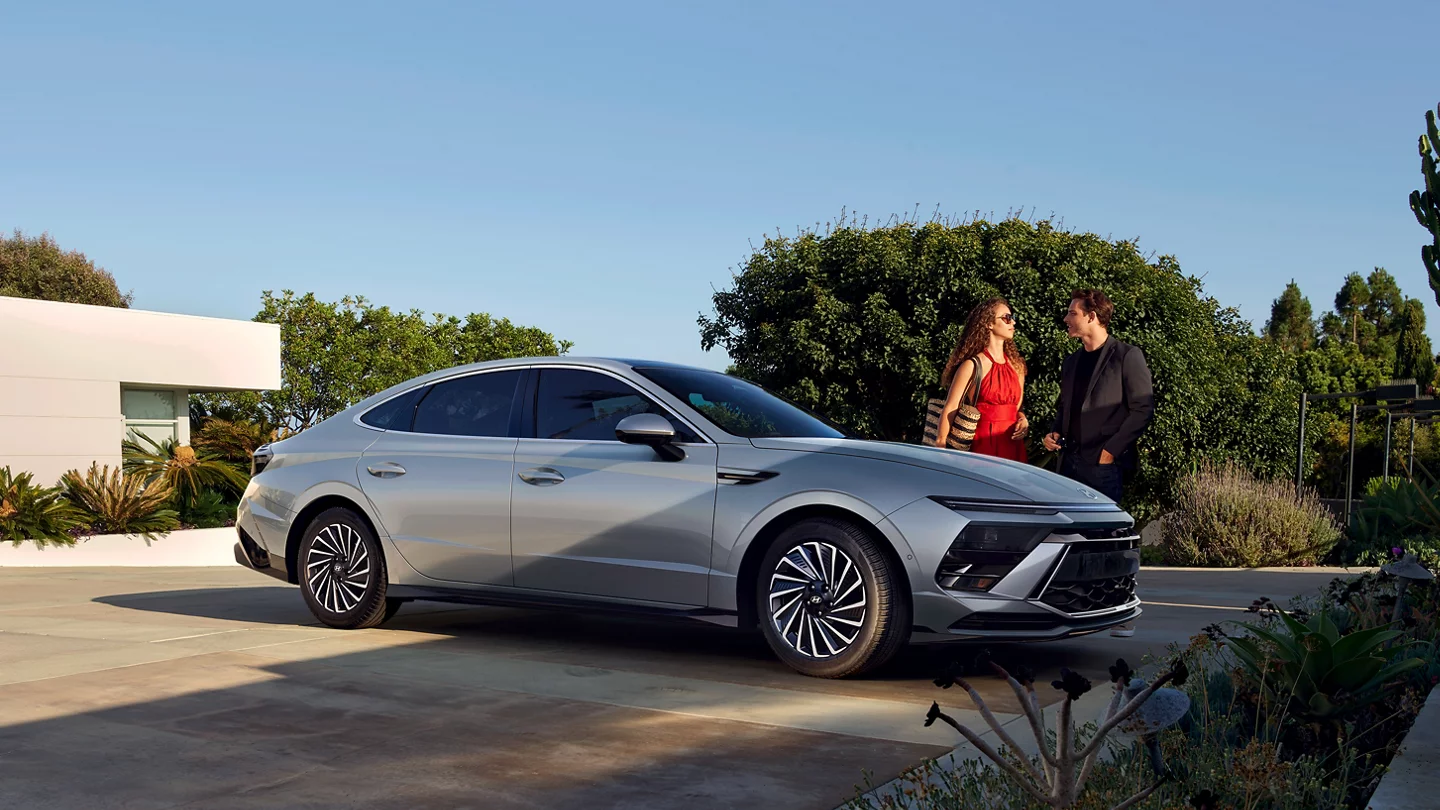
For comparison, the average midsize car comes in at approximately $160 per month, giving the Sonata a clear edge in affordability.
While it isn’t a full-blown performance car, it packs a punch thanks to a turbocharged 2.5-liter four-cylinder engine producing an impressive 290 horsepower.
That’s only part of the appeal—Hyundai equips the N Line with just about every available feature from the start, offering performance and tech that leave many rivals in the dust. If you’re after a midsize sedan with surprising speed and loads of value, the N Line makes a strong case.
In terms of competition, the Honda Accord and Toyota Camry are both strong contenders. Every new Camry now comes as a hybrid, while the Accord features a hybrid powertrain in its higher trim levels.
Another alternative to consider is the Kia K5, which shares a platform with the Sonata and is getting its own refresh for 2025.
KIA Stinger
The KIA Stinger is a performance-oriented sports sedan that features powerful turbocharged engines and a premium interior. Designed for enthusiasts, it delivers an engaging driving experience, sleek styling, and a comprehensive set of safety technologies.
The Stinger stands out as a compelling option for those who value both speed and refinement. Kia, the same automaker known for the humble 120-horsepower Rio subcompact and the Soul crossover famously advertised by dancing hamsters, also builds a genuinely impressive sports sedan that continues to fly under the radar in terms of both recognition and sales.
The Kia Stinger is a sleek, four-door hatchback that delivers strong performance and style. It comes standard with rear-wheel drive, with all-wheel drive available as an option. Essentially, it offers the sporty elegance of a BMW 4-series Gran Coupe but at the more accessible price point of a compact sport sedan.
The base model features a lively 300-horsepower turbocharged four-cylinder engine, while the more desirable version packs a potent 368-horsepower twin-turbo V-6, making the Stinger the first Kia to achieve a 0–60 mph time under five seconds.
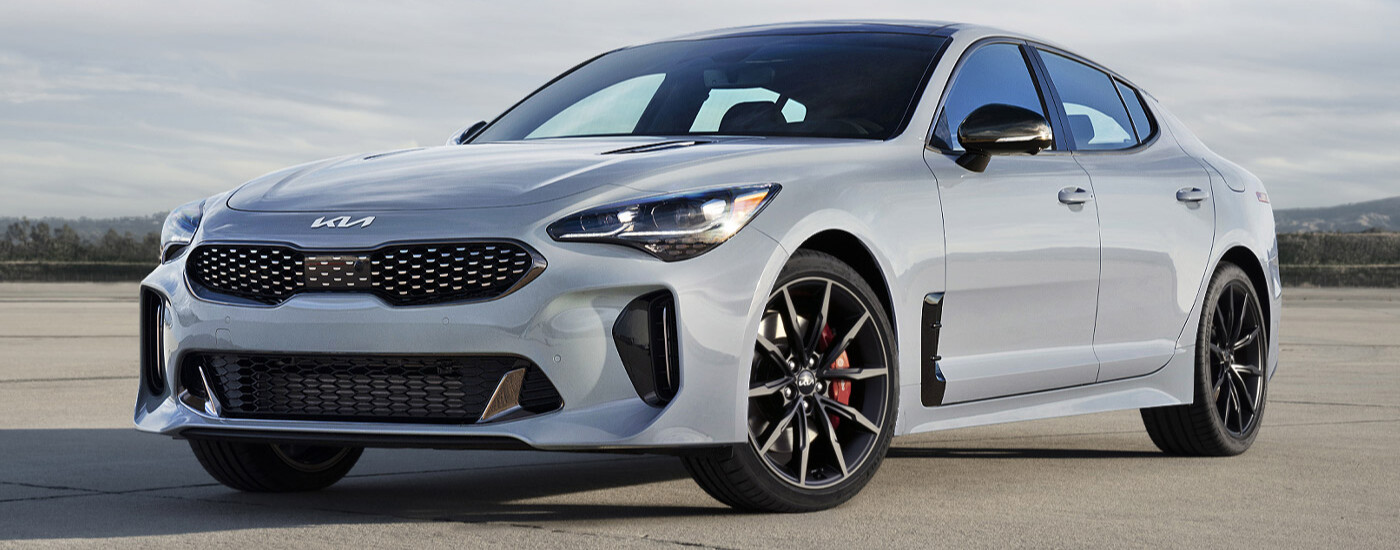
The Stinger handles remarkably well, offering agile performance along with a surprisingly smooth and comfortable ride. Its striking design and premium interior further solidify its appeal as a serious contender in the segment.
For 2023, the Stinger enters its fifth and final year of production with a simplified lineup and the introduction of two special edition packages. Kia has trimmed last year’s GT-Line, GT1, and GT2 trims down to just GT-Line and GT2.
The Apex special edition, available exclusively for the GT-Line, adds a darker edge with Brembo brakes, black exhaust tips, fenders, and side mirrors.
The Grand Tourer package, offered only for the GT2, also features black exterior details, but adds upscale interior enhancements like black suede seat inserts, suede trim on the dashboard, and red contrast stitching on the seats and instrument panel.
To commemorate the end of production, Kia is also releasing a Tribute Edition, limited to just 1,000 units worldwide. This exclusive model is available in Ascot Green or an optional Moonscape matte gray finish, and includes black accents, black Brembo brake calipers, and unique badging to indicate its special-edition status.
Chevrolet Impala
The Chevrolet Impala is a legendary full-size sedan that has been a staple in the American automotive landscape since its debut in 1958. Initially introduced as a premium trim of the Bel Air, it quickly became its own model and soared in popularity thanks to its bold styling, spacious interior, and powerful V8 engine options. T
hroughout the 1960s, the Impala became an icon, particularly with the release of models like the 1964 Impala SS, which remains a cultural favorite among collectors and lowrider enthusiasts. Known for its long, low, and wide proportions, the Impala epitomized American automotive design of the era.
In the 2000s, Chevrolet reimagined the Impala as a front-wheel-drive sedan aimed at families seeking a comfortable and affordable ride.
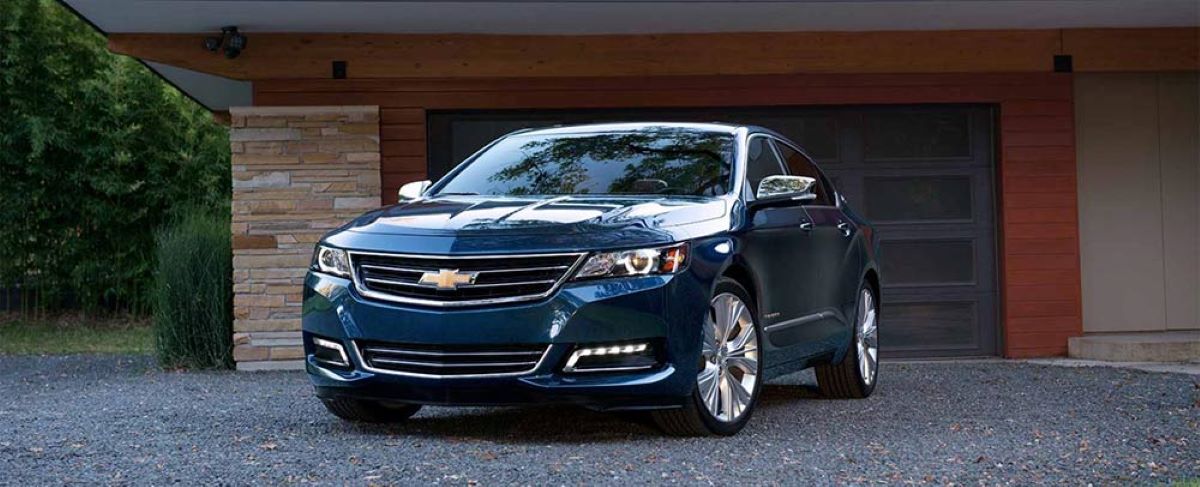
The ninth-generation Impala (2006–2016) offered generous cabin space and engine options ranging from efficient V6s to a powerful 5.3L V8 in the SS variant. The final generation, produced from 2014 to 2020, marked a shift toward a more refined and upscale design.
With modern features like a touchscreen infotainment system, active safety tech, and a strong 3.6L V6 producing 305 horsepower, the Impala competed well against entry-level luxury sedans while maintaining its reputation for comfort and reliability.
Despite its strong legacy, Chevrolet discontinued the Impala in 2020 as consumer preferences shifted increasingly toward SUVs and crossovers. Its departure signaled the end of the traditional big American sedan era.
Still, the Impala remains a symbol of Chevrolet’s history, celebrated for its comfort, style, and versatility across decades. Whether it’s a classic cruising the boulevard or a late-model daily driver, the Impala continues to hold a special place in automotive history.

